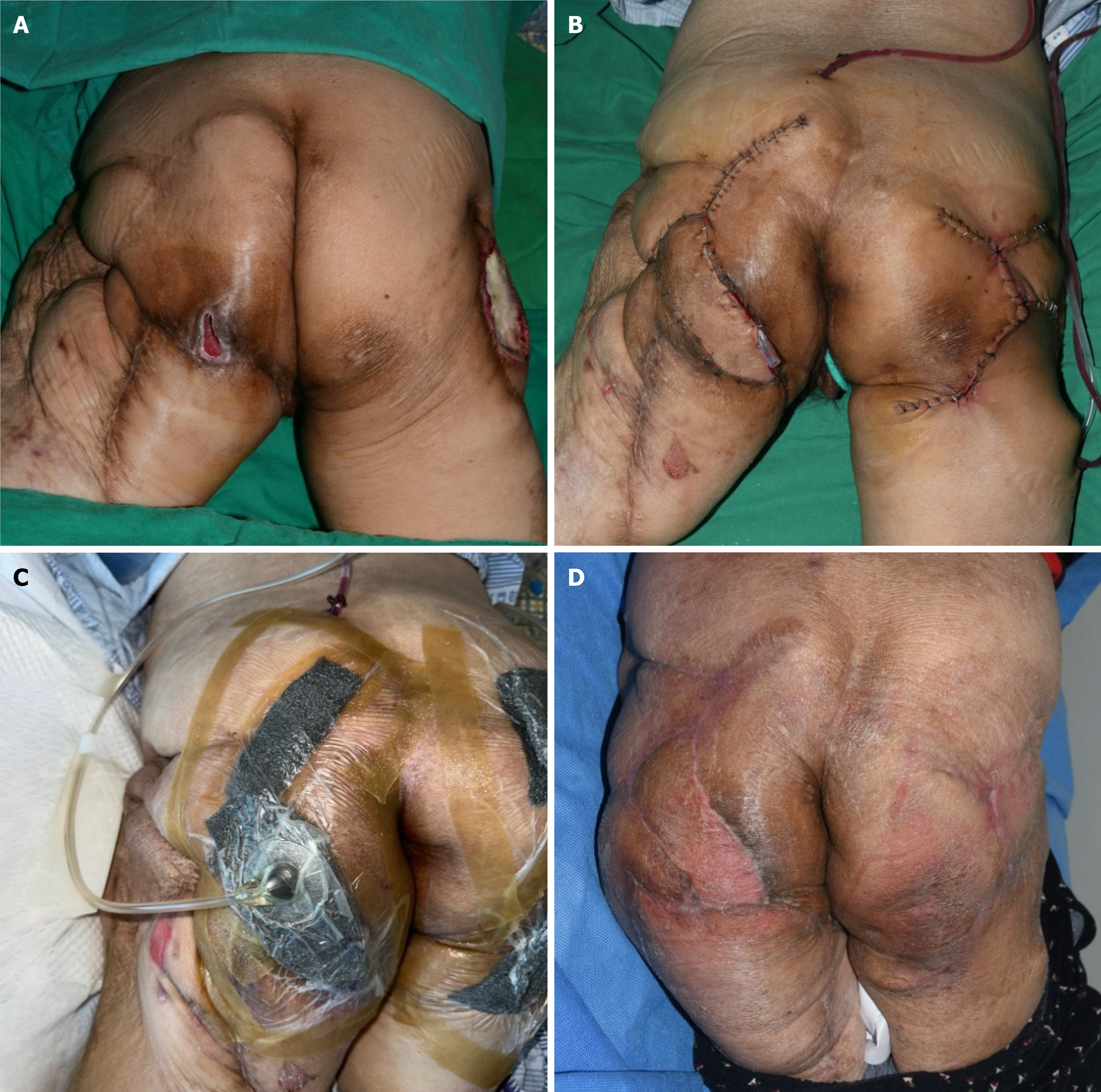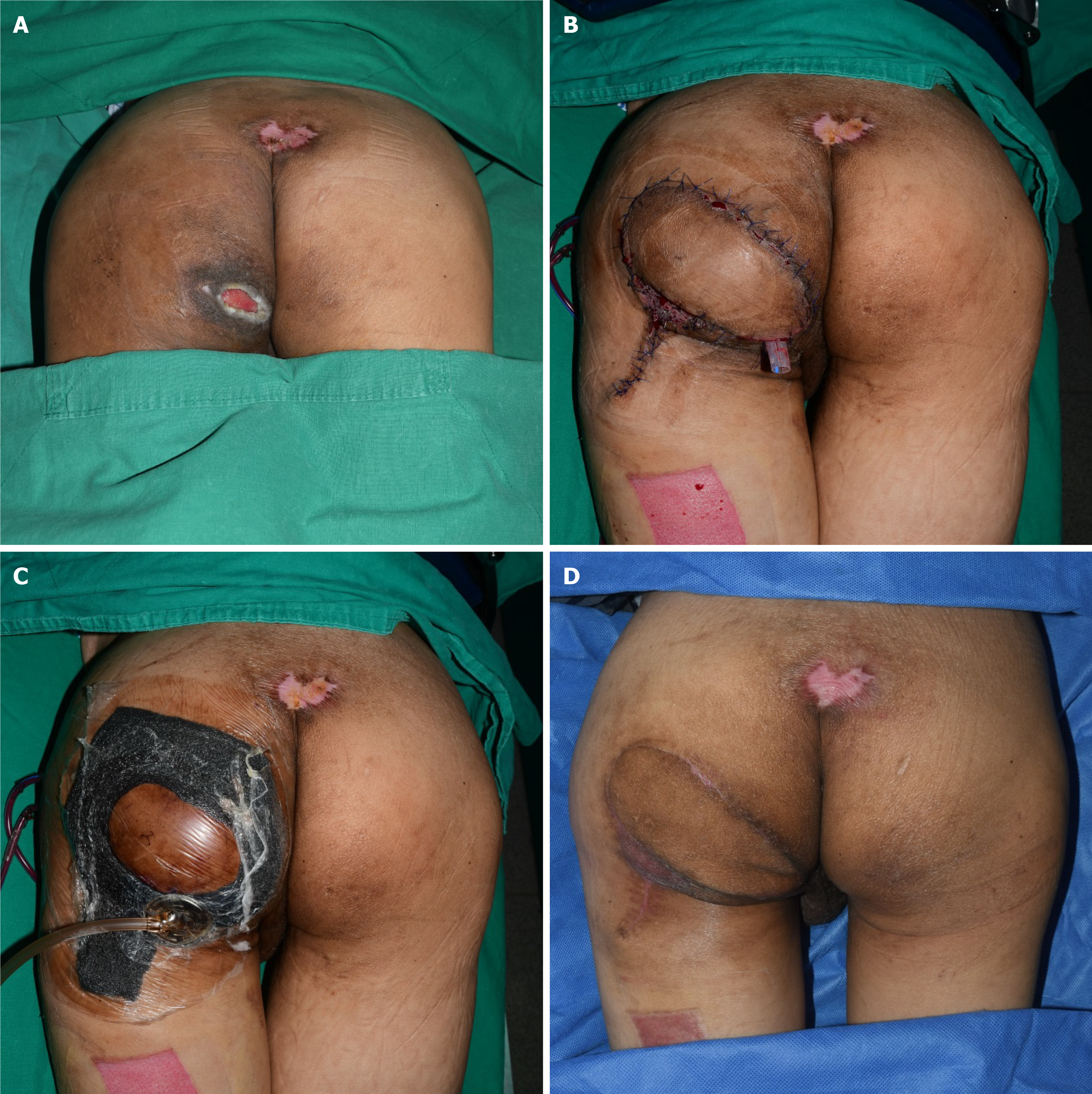Copyright
©The Author(s) 2025.
World J Clin Cases. Aug 6, 2025; 13(22): 107325
Published online Aug 6, 2025. doi: 10.12998/wjcc.v13.i22.107325
Published online Aug 6, 2025. doi: 10.12998/wjcc.v13.i22.107325
Figure 1 Schematic depiction of negative pressure wound therapy combined with a fenestrated Penrose drain.
A: A cylindrical 6 mm Penrose drain, fenestrated to enhance fluid evacuation, was inserted with its distal end placed at the base of the dead space; B: A portion of the negative pressure wound therapy foam dressing was cut to create a space where the opposite end of the fenestrated Penrose drain was positioned.
Figure 2 Clinical photography of Case 1.
A: Wound dehiscence with refractory seroma on left ischium and right trochanter sore; B: Insertion of a fenestrated Penrose drain though flap margin into dead space on left ischium; C: Negative pressure wound therapy combined with a fenestrated Penrose drain to remove the fluid collection and press the dead space; D: Two months after inferior gluteal artery perforator fascio-cutaneous transposition flap surgery on left ischium and V-Y musculocutaneous flap on right trochanter.
Figure 3 Clinical photography of Case 2.
A: Wound dehiscence with refractory seroma on left ischium; B: Insertion of a fenestrated Penrose drain though flap margin into dead space; C: Negative pressure wound therapy combined with a fenestrated Penrose drain for removing the fluid collection and pressing the dead space; D: Two months after inferior gluteal artery perforator fascio-cutaneous transposition flap surgery.
- Citation: Kim S, Jeon HB, Kang DH. Negative pressure wound therapy with a fenestrated penrose drain for refractory seroma following ischial flap: A case report. World J Clin Cases 2025; 13(22): 107325
- URL: https://www.wjgnet.com/2307-8960/full/v13/i22/107325.htm
- DOI: https://dx.doi.org/10.12998/wjcc.v13.i22.107325











